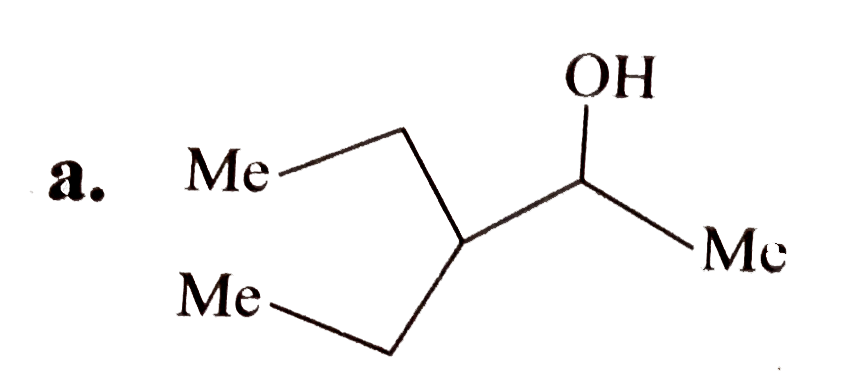Starting from SiCl4 prepare the following in steps not exceeding the number give in parantheses ( give reaction only )
a. Silicon (1)
b. Linear silicone containing methyl groups only (4)
c. Na2SiO3(3).
With aluminium, it can be reduced to silicaon .
3SiCl4+4Al→3Si+4AlCl3
3SiCl4+4Al→3Si+4AlCl3
Si+CuΔ−−→Cu−Si
Cu−Si+2CH3Cl→(CH3)3sicl2+Ca

c. SiC44H2O→Si(OH)4+HCl
Si(OH)4→SiO2+H2O
SiO2+NaCO31400∘C/(→)Na2SiO3+CO2.
Topper's Solved these Questions
- BOOK - CENGAGE CHEMISTRY ENGLISHCHAPTER - P-BLOCK GROUP 14 - CARBON FAMILYEXERCISE - Exercises Archives (True /False)5videos
P-BLOCK GROUP 14 - CARBON FAMILY
- BOOK - CENGAGE CHEMISTRY ENGLISHCHAPTER - P-BLOCK GROUP 13 - BORON FAMILYEXERCISE - Exercise Archives (Subjecive)9videos
P-BLOCK GROUP 13 - BORON FAMILY
- BOOK - CENGAGE CHEMISTRY ENGLISHCHAPTER - PERIODIC CLASSIFICATION OF ELEMENTS AND GENERAL INORGANIC CHEMISTRYEXERCISE - Exercises (Archives )Subjective4videos
PERIODIC CLASSIFICATION OF ELEMENTS AND GENERAL INORGANIC CHEMISTRY
Similar Questions
Find the number of positive integers not exceeding 100 which are divisible by 2 or 3 but not by 4.
(a) 40 (b) 58 (c) 42 (d) 43View SolutionGive reasons for the following
(a) CCl4 is immiscible in water, whereas SiCl4 is easily hydrolysed.
(b) Carbon has a strong tendency for catenation compared to silicon.View Solutionwhich of the following molecules are absorbed by only passive transport in small intestine?
1) glucose
2) amino acids
3) Na^+ ions
4) waterView SolutionIf an= the digit at units palce in the number o1!+2!+3!+……….n! for n≥4 the a4,a5,a6,……… are in (A) A.P. only (B) G.P. only (C) A.P. and G.P. only (D) A.P., G.P. and H.P.
View SolutionLet A={1,2,3}. Then number of equivalence relations containing (1, 2) is (A) 1 (B) 2 (C) 3 (D) 4
View SolutionLet A={1,2,3}. Then number of equivalence relations containing (1, 2) is (A) 1 (B) 2 (C) 3 (D) 4
View SolutionWhich of the following on treatment with hot concentrated acidified KMnO4 gives 2 - methylhexane -1,6 - dioic acid the only organic product ?
View SolutionSilicones are synthetic polymers containing repeated R2SiO units . Since the empirical formula is that of a ketone (R2CO), the name Silicone has been given to these materials . Silicone can be made into oils , rubbery elastomers and resins . They find a variety of applications because of their chemical inertness , water repelling nature, heat resistance and good electrical insulating property .
Commerically silicon polymers are usually synthesised by the hudrolysis of
R2SiCl2[R=Methyl(Me)orphenyl(ϕ)]
 .
.
If we start with SiMeCl3 as the starting material silicones formed is :View SolutionGive the products of the reaction with conc. H2SO4 of :
a.
b.
c.
d. 1- Methyl cyclohexanolView SolutionGive the products formed by the oxidation of hot KMnO4.
a. Cyclobutene b. 1− Methyl cyclobutene
c. 1,2− Dimethyl cyclobuteneView Solution
